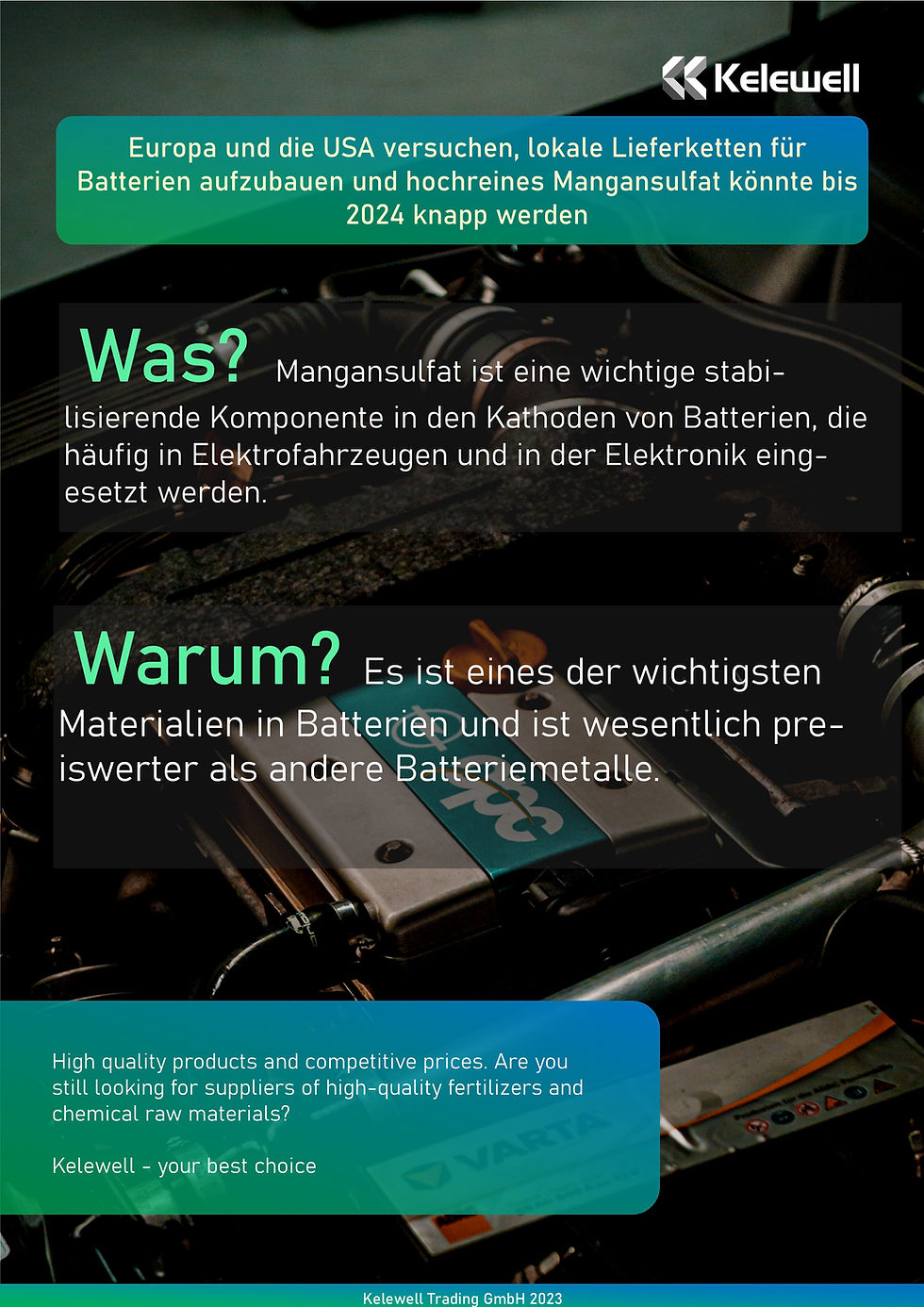High-purity manganese sulfate, one of the key materials for batteries, could face a shortage as early as 2024 as the electric vehicle industry in the U.S. and Europe continues to grow and both places seek to establish their own battery supply chains.
Manganese is an important part of the steel-making process and is currently used primarily in the steel industry, with data showing global manganese consumption of more than 20 million tons in 2021, more than 95 percent of which is used in steel metallurgy.
However, in recent years, manganese has also been gaining ground in the battery market, with manganese sulfate being an important stabilizing component in the cathodes of batteries widely used in electric vehicles and electronics.
Companies such as Volkswagen, Mercedes-Benz, Tesla and General Motors have all stated their intention to use high purity manganese in automotive batteries.
Compared to other battery metals, manganese is much less expensive. While the price of lithium has soared over the past few years to more than $80,000 per ton, and the price of cobalt and copper has exceeded $8,000 per ton, the price of manganese sulfate is less than $1,000 per ton in China, the main source.
Market highly dependent on China
Matt James, chief executive officer of Euro Manganese Inc., warned that growing demand from the electric vehicle industry and the ensuing shortage of high-purity manganese could affect metal prices within 18 or 24 months.
China's expanding manganese sulfate capacity is sufficient to meet current battery industry demand," James said. But looking ahead, we will see significant growth in demand from the European and North American battery industries, both of which need their own supply chains."
He added that due to the Inflation Reduction Act in the U.S. and geopolitics in Europe, the European and American markets are looking to source important materials locally, but there is very little capacity for high-purity manganese in these two geographic areas.
According to James, "Prices in the Chinese market do not reflect prices in the West, and today there is already a significant price premium in Europe and North America."
Industry estimates suggest that, given the cost of transportation and green certification costs for imports from China, manganese sulfate prices will reach $3,300 per ton by 2027 and rise further to $4,000 per ton in both Europe and North America by 2031.
Currently over 92% of the world's high-purity manganese sulfate conversion capacity is in China, with only two plants outside of China producing, one in Japan (Nippon Denko) and the other in Belgium (Vibrantz Technologies).
Lack of capacity in North America and Europe
Aloys d'Harambure, executive director of the International Manganese Institute, said, "I don't think there is a risk of a shortage in the short term because China is building so much capacity."
However, the market may have to start adjusting as the U.S. and Europe begin to build their own battery supply chains.
North America is expected to need more than 200 KT (200,000 tons) of high-purity manganese per year by 2031, but the continent currently has no high-purity manganese processing capacity to feed the large number of battery plants and cathode plants under construction.
Australian coal and metals mining company South32 is developing the first new manganese mine in the United States in decades. In Europe, European Manganese is developing its Chvaletice project in the Czech Republic, the only sizeable classified manganese resource in the EU.
According to Sam Jaffe, vice president of Battery Storage Solutions, the battery industry in both Europe and North America is growing at an alarming rate and both will need their own supply chains in the future, including a manganese supply chain.

Comments